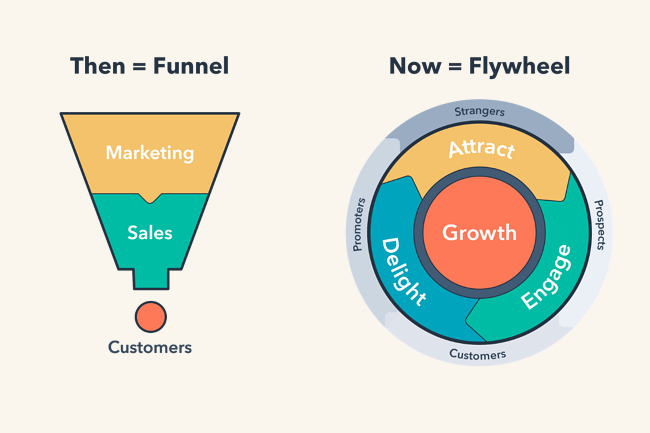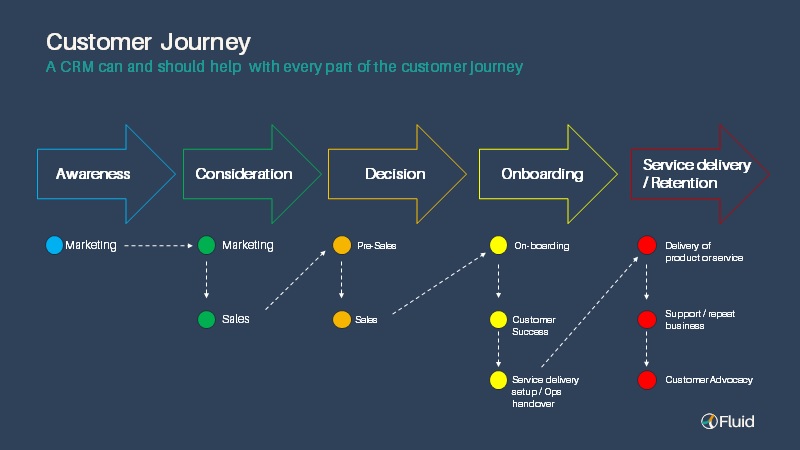
CRMs are fundamentally about relationships, not sales or marketing, and its important to recognise why this change in emphasis can be hugely impactful for your business.
In a previous blog we explored what a CRM is and what it can do for your business.
A lot of people pigeon-hole a CRM as a system that primarily helps with digital marketing and sales pipeline, helping drive faster and more automated customer acquisition and letting you better track and manage opportunities and deals through to completion.
It is true that a CRM can help with this, if implemented as part of a clear and considered vision for sales and marketing, alongside a well designed sales process and good KPIs.
However we feel its really important to emphasise the 'RELATIONSHIP' part of Customer Relationship Management.
In recent times, leading advocates for CRMs and customer experience excellence, like the CRM solution provider Hubspot, have increasingly started talking about customer relationships in terms of continuous lifecycles, rather than finite linear funnels (see diagram).

What is the difference between the flywheel and the funnel?
When you think about customer acquisition as a linear process that starts with attracting the attention of new prospects, and ends with converting them into a new customer, you design all your processes to give a great acquisition and on boarding experience but aren't necessarily consciously thinking about the customer experience after that point.
One of the key messages that the flywheel tries to get across is that the customer journey and experience doesn't stop with becoming a new customer, that's merely where it starts.
Other models think of new customers as an outcome — job done. All of the effort you spent acquiring that customer dissipates, leaving you at square one.
What the flywheel concept also highlights is the inherent value in leveraging your best and most satisfied customers and using the momentum of your happy customers to drive referrals and repeat sales. Basically, your business keeps spinning if you look after your customers.
New customer acquisition vs retention
As noted by a recent article from The European Business Review, new customer acquisition is typically five times more expensive than retention.
Another study conducted by Bain & Company found that a 5% increase in customer retention rate can lead to a rise in profit between 25% to 95%.
A good CRM can, and should help with every part of the customer journey. Whether that's self service portals for customers to access support, or obtain information, case management and support modules to track all customer interactions and measure overall customer satisfaction, or tracking your happiest customer to consciously turn them into advocates and drive referrals.

Understanding the customer journey
Before implementing a CRM to help improve your customer journey, first it’s a good idea to understand what your customer journey looks like (from their perspective) and where it is a good and bad experience for them.
As with any system implementation, you need clarity about your business vision, your goals, what you are trying to achieve, your process and people, before you start to consider where technology can help.
That's why at Fluid part of our philosophy is that we focus on business outcomes, not just technology deliverables and that we consider people, process then technology, in that order, so as to achieve meaningful change and collective success.
Customer experience and retention as a strategic response to trying times?
I'll leave you with this thought. At the time of publishing this blog, we are in the middle of global supply chain issues and raw materials shortages, double digit inflation, and a cost of living and energy crisis affecting consumers and businesses alike. Unfortunately there is often very little you and your business can do to influence and control these external factors.
However one thing you can influence is your customer service and customer experience. As we've heard earlier, studies show that customer retention can really impact your bottom line. So maybe the best strategic response to these trying times, is to try your very best to delight, and therefore hold on to your current customers, rather than put too much focus on winning new ones. And a CRM solution could help you in that mission.